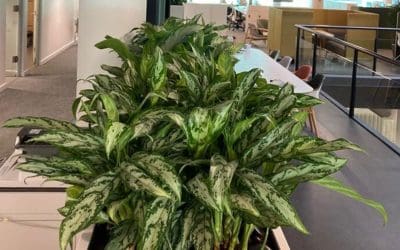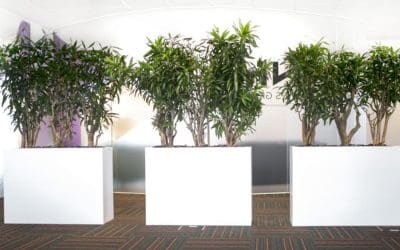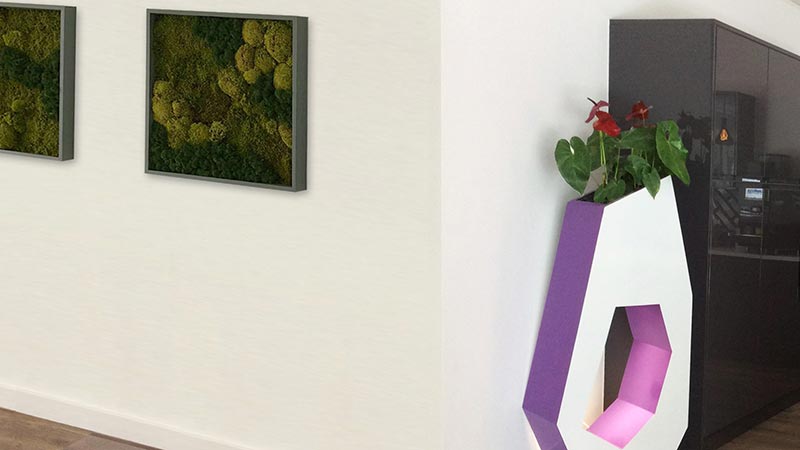Anything you need to know about
Biophilia
We are a modest bunch here at Green Team Interiors and with typically British reserve, we never like to ‘show off’. However, the subject of biophilia is something of a speciality of ours, so much so that we are delighted to be working with a major university on perhaps the largest study ever undertaken in the UK.
Biophilia is based on the understanding that all humans possess an inbuilt drive to make connections with nature and other forms of life. Certainly, there is no doubt that people perform better in the presence of plants and we have written a number of blogs on the subject. One of the basic truths about Green Team Interiors is our desire to make the working environment as happy, healthy and productive as possible through the use of biophilic design and we continue to work hard to achieve this goal.
Way back, in 2015 our Managing Director, Mark Berriman shared a video on our website. It was from Wall Street Journal TV, and it featured an interview with respected horticulturist, Justin Hancock.
Justin went on to reference a study from Texas A&M University, which tested men and women in rooms with and without plants. The people in rooms with plants came up with more ideas when they were problem solving and the women came up with more creative solutions.

Plants make great workmates
In the years since posting the link, more and more evidence has been presented to show that there is a definite, and extremely positive link between spending time in a natural environment, and our physical and mental well-being.
We have been delighted to publish reports and blogs on our website featuring evidence and statistics, as well as confirmation of facts about plants helping with reducing air toxicity, stress levels, absenteeism, and even air-conditioning costs.

Make Space for Plants
One of the leading champions of biophilic design and the importance of green space, is none other than the National Aeronautics and Space Administration, or to give them their full name NASA (see what we did there).
As far back as 1986, NASA were researching the ability of plants to absorb harmful gasses and in a much more recent study, they played an important part in largest studies ever completed to document a positive connection between green space, and mental health.
‘Green space most strongly protects against mood disorders, depression, neurotic behavior, and stress-related issues, the study found, signalling that psychological restoration may be the strongest protective mechanism that green space offers.’

But where did it all begin for Biophilia?
The word itself was first used in the early 1960s, in the cheery sounding page-turner ‘The Anatomy of Human Destructiveness’ by Erich Fromm, the German/American Psychoanalyst, describing biophilia as ‘the passionate love of life and all that is alive’.
Fast forward a couple of decades and we find Edward O. Wilson publishing his wonderful book ‘Biophilia’. It really is not too wild a claim to say that Edward was the ‘Father of Biodiversity’, and such was his reputation as a biologist, naturalist, and ecologist, that his book created, and continues to create a genuine interest in Biophilia.
(Among his many academic posts and achievements, Wilson was ‘Pellegrino University Research Professor Emeritus in Entomology for the Department of Organismic and Evolutionary Biology at Harvard University’…imagine how large his business cards were!)
Wilson had started a fire, his work was embraced, and while some of his theories were somewhat controversial, his book Biophilia, published in 1984 continues to sell to this day.

Biophilia and the Green Team Interiors Story
Elsewhere on this website, and in many of our blogs we speak proudly of ‘A Better Way’, our very own set of principles, based on treating every person connected with our business with respect, and understanding.
Biophilia is a key element of our approach, and to us it is much more than a buzzword, we work with designers, and developers, facilities management companies, and individuals that genuinely ‘get’ biophilic design.
We are proud to be able to add to the ongoing study of Biophilia, working with major Universities, and respected academics. But mainly, we are thrilled to see so many companies embrace the concepts that we have been promoting for over twenty-years.
Without question, biophilic design makes workplaces, and people better. Paying attention to how we, as humans, react with our surroundings seems to us to be the most common sense thing that there is.
From the blog
Any Questions?
We can advise on which plants work in every household location, which thrive on neglect, and which delicate doilies need the most care and attention.
Plants to the Rescue
We considered the role of plants in medicine, and how even the humblest leaf, root, or herb literally saves the day, every minute of every day.
The ‘Hotelification’ of the workplace
We love how much ‘the green stuff’ is appreciated, and used by office designers, and fit out companies to make workplaces more comfortable.
Plants, they’re a bit boring really
We don’t sell plants ‘by the yard’, but we are pragmatic enough to appreciate that sometimes, our customers need something a little bit different from us.
A word about Greenwashing
From misleading product packaging and unsubstantiated claims, all the way through to telling downright fibs, businesses of all shapes and sizes are being called out for ‘Greenwashing’. High profile...
The surprising world of biophilia and biophilic design
It may not be a word with which you are familiar but we guarantee you will be hearing a lot more about it. What is it? Biophilia, or the biophilia hypothesis is the idea that all human beings...

15% increase in productivity
with clear spaces and clear heads

Reduce anxiety & stress by 50%
with a positive work environment

50% rise in creativity
by cultivating inspirational spaces

Reduce air conditioning by 30%
with cleaner & clearer air






